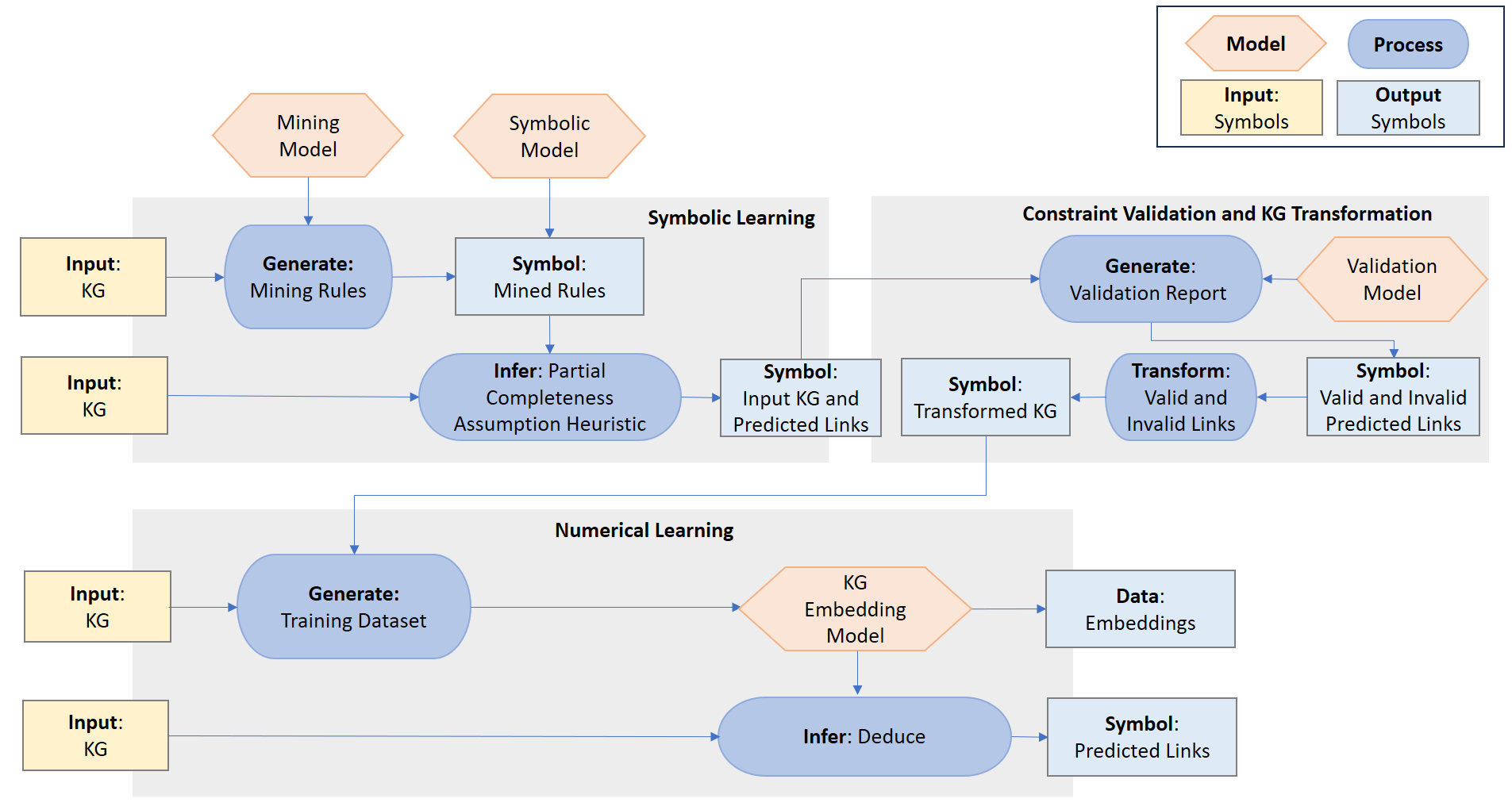VISE represents a novel hybrid strategy that integrates symbolic learning, constraint validation, and numerical learning approaches. VISE employs KGE to capture implicit information and represent negation in KGs, thereby enhancing the prediction performance of numerical models. The experimental results demonstrate the efficacy of this hybrid technique, which effectively integrates the strengths of symbolic, numerical, and constraint validation paradigms.
Clone the repository
git clone git@github.com:SDM-TIB/VISE.git
Executing scripts to reproduce Symbolic Learning, Constraint Validation and Transformation navigate to Symbolic Learning folder
Step 1: Provide configuration for executing in input.json file
{
"KG": "SynLC",
"prefix": "http://synthetic-LC.org/lungCancer",
"rules_file": "synLC_1000.csv",
"rdf_file": "SynthLC_1000.nt",
"constraints_folder": "SynLC"
}The user must provide the cconfiguration details in input.json file
KG corresponds to the folder of Knowledge Graph user wants to utilize.
prefix refers to the prefix utilized in the KG (.NT file)
rules_file contains the symbolic learning rules user want to use in .CSV format
rdf_file is the name of the KG (.NT file) in the KG folder
constraints_folder refers to the folder where the SHACL constraint defined based on the domain knowledge.
Step 2: Execute Symbolic_predictions.py
python Symbolic_predictions.pyThe symbolic learning predictions are saved under the folder Symbolic Learning/Predictions. The Predictions folder contains two sub-folders
- predictions generated per predicate in the head of the rule
- The enriched KG, i.e., the original KG with enrichment performed by symbolic learning predictions
Lastly,
Tranformed_{KG_name}containts the KG after the tranformation process.
Executing scripts to reproduce KGE results by choosing Baseline or VISE folders and navigating to appropriate path.
Step 1: Provide configuration for executing
{
"Type": "Baseline",
"KG": "baseline1.tsv",
"model": ["TransE", "TransH","TransD","RotatE"],
"path_to_results": "./Results/Baseline1/"
}The user must provide a few options in the above JSON file to select the type of approach that has to be executed with added configuration details.
The parameter Type corresponds to the type of execution, i.e., Baseline or VISE.
Secondly, parameter KG is the type of knowledge graph, i.e., KG 1 or KG 2 or KG 3.
Nextly,modelparameter is used for training the KGE model to generate results for readability.
Lastly, path_to_results is parameter given by user to store the trained model results.
Step 2: Execute kge_vise.py
python kge_vise.py Note: KGE models are trained in Python 3.9 and executed in a virtual machine on Google Colab with 40 GiB VRAM and 1 GPU NVIDIA A100 SMX-4, with CUDA Version 12.2 (Driver 525.104.05) and PyTorch (v2.0.1).

